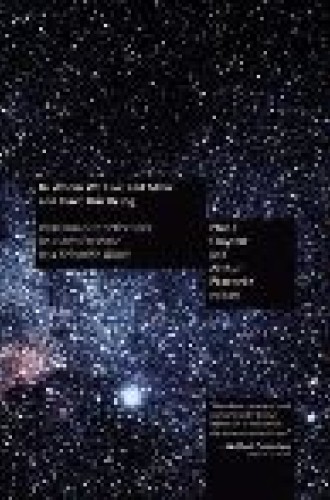In Whom We Live and Move and Have Our Being: Panentheistic Reflections on God's Presence in a Scientific World
Like many bibliophiles I tend to shy away from multiauthor volumes; they are often so uneven as to seem like minibooks simply slapped together with an editor’s introduction. This collection of essays on panentheism does not suffer the same disadvantage because of strong editorial control (not censorship) and interaction between the authors. Philip Clayton’s afterword tells us that the authors met in conference; they clearly read each other’s manuscripts and incorporated the insights and responses to them into their own chapters. All were clearly cognizant of some overriding concerns, such as the need to discover family resemblances among accounts of the God-world relationship that are labeled panentheistic, and the desire to elucidate the variety within those families of accounts.
One message of the book as a whole is that panentheism is a contested concept. Several authors tell us that some leading panentheists contest even the definition of the term in the Oxford Dictionary of the Christian Church. Contemporary Christian philosophers and theologians often misinterpret the concept as well. Most of the authors in this volume ask whether a generic panentheism exists or whether there are multiple panentheisms.
If the authors of this volume were taken as representative of all scholars who espouse panentheism, the answer to their question would have to be that there is more diversity than unity within the camp of self-proclaimed panentheists. Most of them affirm that in some sense (that phrase crops up a lot!) the universe exists in God, but they cannot agree on the meaning of that phrase. Some of them settle for stressing divine immanence while affirming God’s otherness to the world. The Eastern Orthodox authors seem uncomfortable with any model of the God-world relationship that makes God dependent on the world—something most panentheists consider a virtue of their view. Even Clayton draws back from the idea that God is dependent on the world and from a purely naturalistic account of nature that reduces God to a dimension or aspect of the universe. The common panentheistic analogy of the world as God’s body also comes under scrutiny, with some of these authors finding virtue in it while others criticize it.
One of the most informative and perhaps controversial essays is “Three Varieties of Panentheism,” by Danish theologian Niels Henrik Gregersen. It alone is worth the price of the book. Gregersen demonstrates that virtually all uses of the term panentheism fall into one of three categories: soteriological (also called eschatological), expressivist or dipolar panentheism. All three attempt to mediate between the too-immanent God of pantheism and the overly transcendent and perhaps uninvolved God of deism (and of some accounts of classical theism), and they all hold that God is intimately involved in the universe and its processes and is affected by what happens in nature and history. There the similarity ends.
Soteriological panentheism is represented in this volume by the Eastern Orthodox theologians; Clayton and Keith Ward hint at it as well. This view emphasizes that God is so intimate with the world as to be affected by it, but asserts that God does retain some self-sufficiency; God did not have to create the world and is not dependent on it for being. God-world unity is emerging toward an ultimate completion that will not obliterate the separation of God’s essence from the world. The question is whether this really ought to be called panentheism (though some theologians, such as Jürgen Moltmann, have called it that).
If the term panentheism can be stretched to cover versions of theism in which God retains some degree of independence from the world and is affected by it only through some kind of self-limitation, it becomes too thin. A few of the authors appeal to such a divine self-limitation as the basis for the world’s being in God. They would do better to call their theory a revised theism or (in the case of the Eastern Orthodox theologians) an emphasis on God’s immanence that is consistent with classical theism.
Expressivist panentheism is associated especially with the thought of German idealist philosophers, such as G. W. F. Hegel, and their heirs. It views God as coming to self-realization through the temporal processes of nature and history. Apart from a qualified endorsement by Clayton (who nonetheless finds the label unhelpful), this type of panentheism finds little support among these authors. Dipolar panentheism, finally, is the most common type in contemporary Christian theology because of its association with process thought. It sees God as receiving concrete being (that is, experienced life) from the world while possessing an eternal, primordial and abstract nature that is independent of the world. Several authors incline toward some variety of this form of panentheism.
One important issue raised by real panentheism (the expressivist and dipolar versions) is that of grace. If God is dependent on the world and in any sense needs the world, what becomes of grace? Is grace not then exhausted in nature (in the metaphysical sense)? Self-identified panentheists of all three varieties who consider themselves Christians need to wrestle with this issue more explicitly. Grace beyond nature would seem to be indispensable to the gospel; a relationship with a God who is essentially tied to the world does not seem to be one of grace. This is why the church fathers introduced the idea of creatio ex nihilo, which is barely touched on in this book. The redemption of a world without which God cannot be fully God is redemption not by grace but by necessity.





